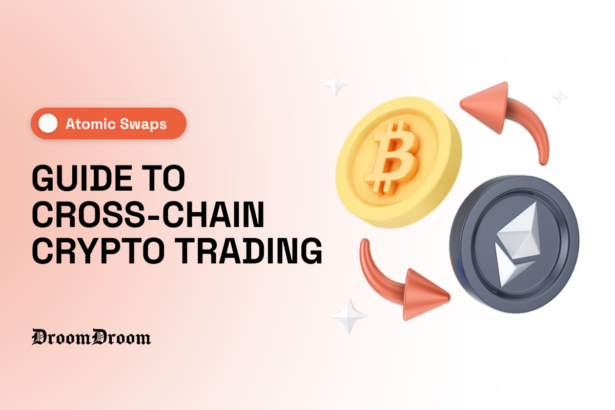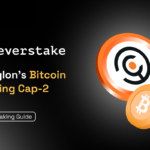Ever been stuck with one type of cryptocurrency and wished you could just swap it for something else without going through all the hassle of exchanges, middlemen, and complicated fees? You’re not alone. That’s where atomic swaps come in.
- So, What Are Atomic Swaps?
- How Do Atomic Swaps Actually Work?
- Step One: Agreement
- Step Two: The Smart Contract
- Step Three: Cryptographic Puzzle
- Step Four: Time Limit
- Step Five: Trade Complete
- Why Should You Care About Atomic Swaps?
- Are There Any Downsides?
- How to Actually Do an Atomic Swap?
- What’s Next for Atomic Swaps?
Atomic swaps are a way for two people to trade tokenized assets across different blockchain networks without relying on a centralized intermediary to facilitate the transaction. This provides DeFi users with a way to maintain high levels of decentralization as they move across the multi-chain Web3 ecosystem.
They sound fancy, but don’t worry—by the end of this article, you’ll feel like a pro explaining it to your friends.
Let’s break it down in a simple way. Imagine you want to trade some Bitcoin for Litecoin, but instead of using a traditional exchange like Coinbase or Binance, you want to keep things more decentralized—like totally skipping the middleman. That’s where atomic swaps come in!
So, What Are Atomic Swaps?
Picture this. You’ve got some Bitcoin, and your friend has Litecoin. You want to exchange your Bitcoin for their Litecoin, but neither of you wants to go through an exchange. You also don’t trust each other enough to send the coins blindly—because, let’s be real, who wants to take that risk?
Atomic swaps solve this by letting you trade directly, peer-to-peer, without needing to involve an exchange. It’s a bit like bartering, but with cryptocurrency. And it’s all done using something called smart contracts. These contracts make sure that either the trade happens, or it doesn’t—there’s no in-between, no “halfway done” transactions, no chance for someone to cheat.
The term “atomic” refers to something that either happens fully or not at all—kind of like flipping a light switch. Either it’s on, or it’s off. Atomic swaps use this same principle when it comes to cryptocurrency trades.
How Do Atomic Swaps Actually Work?
Let’s break it down into simple steps so it’s easier to digest:
Step One: Agreement
You and another person (let’s call them Bob) agree to trade, say, your Bitcoin for his Litecoin. You both agree on the amounts and set the trade in motion.
Step Two: The Smart Contract
A smart contract is created. Think of this as a vault that holds the coins for both of you. It locks up both your Bitcoin and Bob’s Litecoin until you both meet the conditions of the trade.
Step Three: Cryptographic Puzzle
Now, here’s the fun part—this vault (the smart contract) has a puzzle built into it, and only by solving the puzzle can you unlock the coins. Don’t worry, you won’t need to do this manually; the cryptography is handled by your wallet software.
Step Four: Time Limit
There’s a timer ticking away too. If either of you doesn’t meet the conditions within a certain amount of time, the trade is canceled, and both parties get their original coins back. No harm, no foul.
Step Five: Trade Complete
Once everything checks out (you’ve solved the puzzle on your end, and Bob’s done the same on his), the vault opens, and the coins are swapped. You get Bob’s Litecoin, and Bob gets your Bitcoin. Done!
Why Should You Care About Atomic Swaps?
There are a few big reasons why atomic swaps are gaining traction—
- No Middlemen: You’re in control. No more exchanges holding onto your private keys or charging crazy fees. It’s all in your hands.
- Faster & Cheaper: Since there’s no third party involved, swaps can be faster and typically cheaper than using a traditional exchange.
- More Privacy: No need to sign up for an exchange or go through complicated KYC processes. It’s just you and the other party doing a direct trade.
- Cross-Chain Trading: Normally, swapping Bitcoin for Litecoin requires multiple steps through an exchange. With atomic swaps, it’s done in a single transaction across different blockchains.
Are There Any Downsides?
Well, nothing’s perfect. Atomic swaps have their challenges:
- Not Super User-Friendly Yet: Some wallets support atomic swaps, but it’s still a developing tech. It’s not quite as easy as clicking “trade” on an exchange, but it’s getting there.
- Compatibility Issues: Atomic swaps only work between certain blockchains, so not every coin can be swapped yet.
How to Actually Do an Atomic Swap?
If you’re thinking, “This sounds great, but how do I do it?” – don’t worry! There are already some wallets and decentralized exchanges (DEXs) that support atomic swaps. You’ll usually see a button that says “Swap” or “Exchange.” You select the coins you want to trade, check the fees and rate, and hit “confirm.”
In about 20 minutes or less (depending on the network), the trade should be done. It’s that easy!
What’s Next for Atomic Swaps?
Atomic swaps are still relatively new, but the technology has a lot of potential. As decentralized finance (DeFi) keeps growing, more and more wallets and DEXs are likely to adopt atomic swaps, making it easier for everyone to trade across different blockchains without giving up control of their private keys.
It’s an exciting time for the crypto world, and atomic swaps are a big part of the movement toward true decentralization. So, next time you’re looking to trade one coin for another, consider skipping the exchange and doing an atomic swap instead.



















